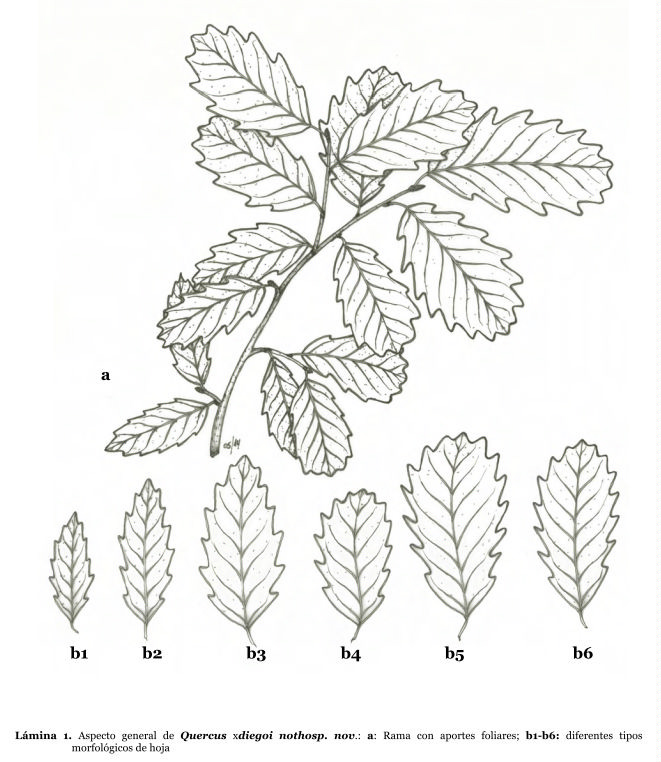| Quercus x diegoi | |
| Author | F.M. Vazquez, C. Pinto-Gomes & al. Folia Bot. Extrem. 8: 95 (2014) |
| Synonyms | Q.
fruticosa Lam. X Q.
pyrenaica Willd. Diagnosis : Arbor mediocris, 4-6 m, cortice rimoso nigricante, ramis griseis pubescentis, ramulis petiolisque fuscescenti-tomentosis; foliis 3,5-6(7) x 1-3,5(4,2) cm, juvenilibus utrinque tomento denso crasso, adultis crassiusculis supra obscure virentibus multistellato-pubescentibus subtus canescenti- et velutino-tomentosis, ovatis vel obovatis, breviter petiolatis 4-9 mm tomentosis, basi rotundatis, lobulatis vel serratis, lobis lineari-lanceolatis obtusis vel acutiusculis, inter Quercus lusitanica et Quercus pyrenaica. Sterilis |
| Local names | |
| Range | Estremadura (Spain) |
| Growth habit |
up to 6 m. |
| Leaves | 3,5-6 (-7) x 1-3,5(-4,2) cm, ovate to obovate, lobate or serrate, base and apex rounded, margin entire near base; young leaves pubescent adaxially; mature leaves glabrescent with multistellate hairs; abaxially greyish tomentose with numerous fasciate hairs, mixed with the same number of multistellate ones; simple hairs on veins; petiole tomentose, 4-9 mm long; |
| Flowers | |
| Fruits | sterile, without fruits; |
|
Bark, twigs and |
bark fissured, blackish; mature twigs glabrous, greyish; young twigs pubescent, covered with greyish fasciate trichomes; |
| Hardiness zone, habitat | rocky or clayish calcareous, moist soils; |
| Miscellaneous |
-- Differs from Q. lusitanica (= Q.
fruticosa) in having a longer petiole (less than 4-5 mm in fruticosa); |
| Subspecies and varieties |
|
| Pictures |
More picture HERE
|
